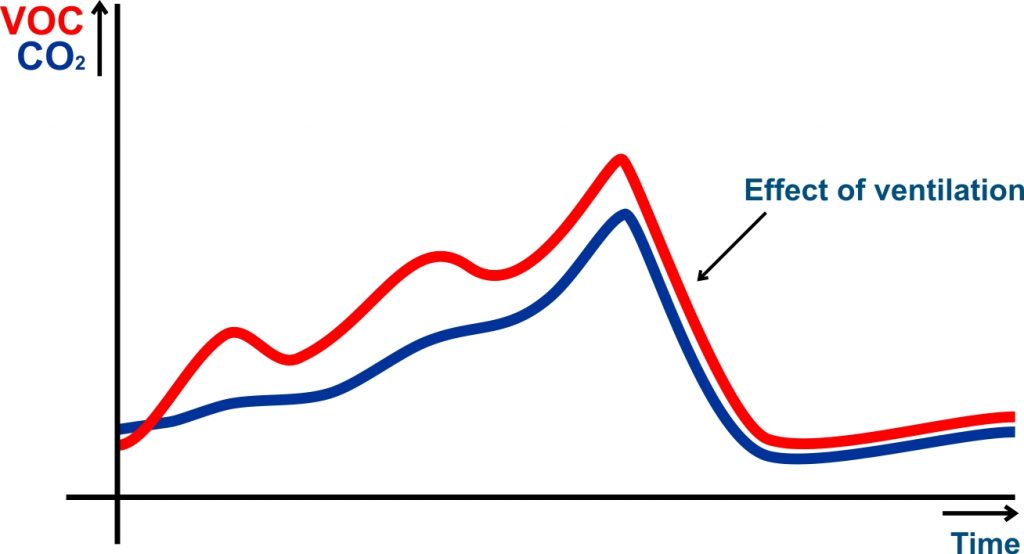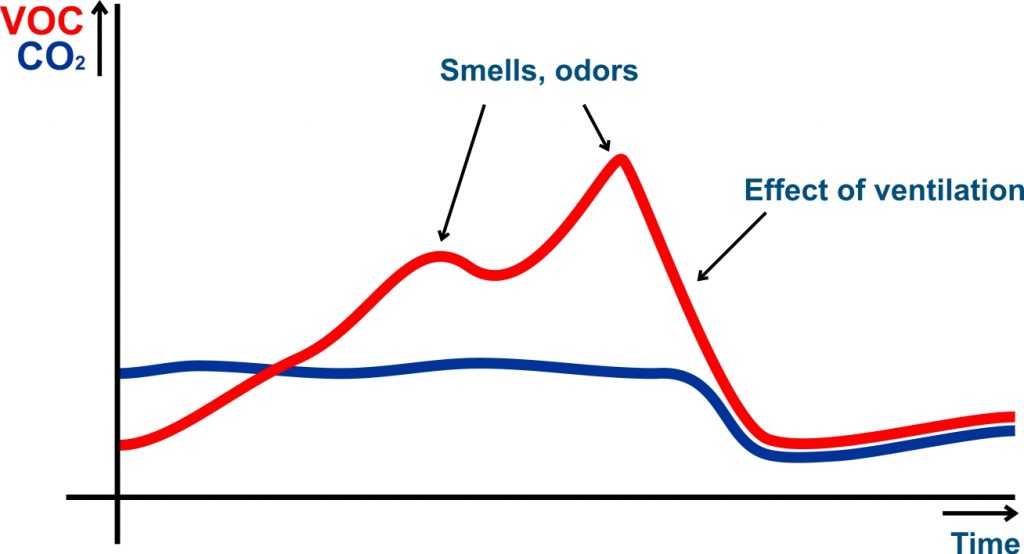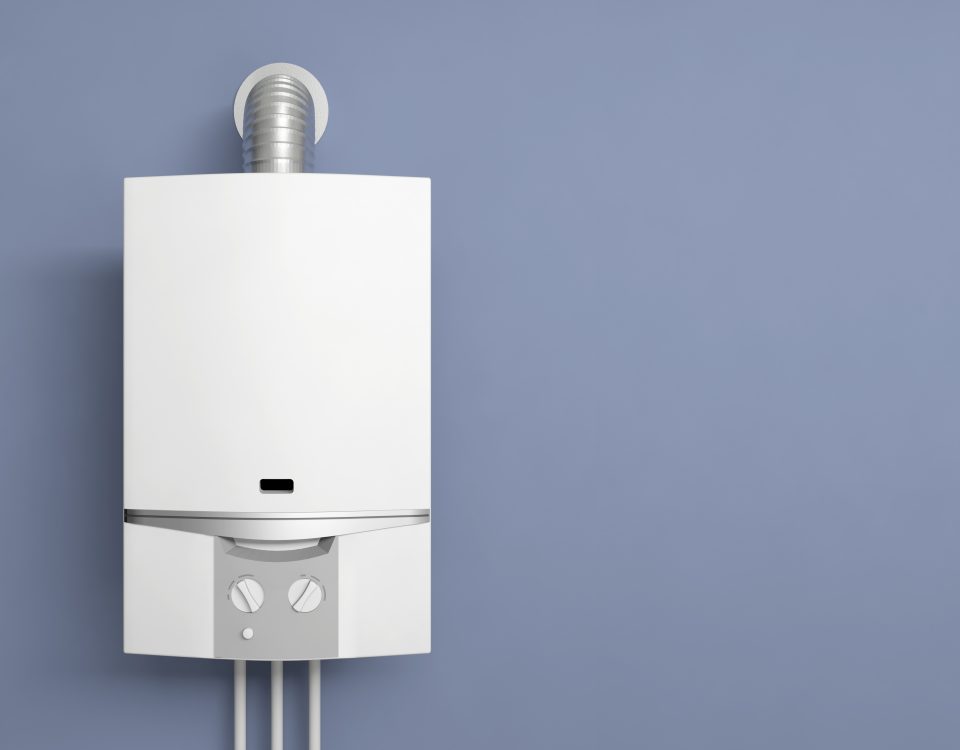
What is air quality and how the terms VOC and TVOC relate to it
The term “VOC” stands for Volatile Organic Compounds.
(Volatile = at room temperature in a gaseous state)
It was only in the second half of the last century that people started to take a deeper interest in air quality, as more and more people started to come indoors and spend longer periods of time there. These people then began to experience unpleasant sensations such as fatigue, drowsiness, headaches, nausea or various allergies – all due in large part to poor air quality. (For more information see the article 6 negative effects of stale air)
Whether we like it or not, it is we ourselves who have the greatest negative impact on the quality of the indoor environment – through our own breathing process or even through the increased metabolic activity associated with intense physical activity in a given space.
The human body therefore excretes, through breath, sweat, skin transpiration, etc., other substances besides the familiar carbon dioxide, such as ammonia, acetone, ethylene, methane and many other types of volatile organic compounds that are produced in the process of digesting organic food. All of this depends on age, eating habits, health, general fitness and, of course, current physical activity.
However, there may be other equally significant sources of pollution outside of a person’s own metabolic activity; in fact, we could say that we generate various other odours and smells through our activities, which are unpleasant and often harmful to health.
Other significant sources of VOCs include:

- cooking, frying and other technological processes
- coatings, adhesives
- cleaning and disinfecting agents
- furniture
- flooring materials, carpets
- scented candles, perfumes and cosmetic products
- …
In the last century, scientists estimated that there were approximately 5,000 volatile organic compounds. Today, with the addition of plastics, chemicals, adhesives, coatings, etc., the number is estimated at more than 10,000 different types.
But why is air quality judged mainly by CO2 concentration?

This is because the concentration of CO2 in the exhaled air in the indoor environment is about 50 times higher than it is in the inhaled air. This is why CO2 concentration is a very good indicator of exhaled air.
In fact, ventilation control takes advantage of the fact that if the CO2 concentration rises, so does the concentration of VOCs. So when you start ventilating based on increased CO2 concentration, both CO2 and VOC concentrations drop and we feel better.
Another reason is that, unlike the large number of different types of VOCs, it is sufficient to monitor the concentration of only one substance, CO2, at reasonable cost and with sufficient accuracy, which has a very good predictive power of how the air in a given space is currently ventilated and therefore gives us clear information about the need for ventilation. See the chart on the right:
For which rooms is the VOC sensor suitable?
There are of course rooms where a CO2 sensor would show low readings despite our discomfort, as it does not measure
the very smells and odours that are present and represent the predominant air pollution in that space.
Examples of such spaces are:
- factory, professional kitchens
- toilets
- changing rooms
- gyms, fitness centres
- …
In such spaces, the relationship between CO2 and VOCs can be, for example, as in the chart on the right:
The term “TVOC”
This term represents the so-called Total Volatile Organic Compounds (TVOC), i.e. the sum of VOCs in the monitored air. TVOCs generally cover a wide range of different organic substances that are often chemically very similar and difficult to distinguish, which has resulted in the development of several different TVOC standards.
The sensitivity characteristics of Protronix VOC sensors comply with two recognised international standards, the EPA (Environmental Protection Agency) and UBA (UmweltBundesAmt) standards.
The term “eCO2“
You may also come across the term eCO2 in connection with VOC measurement. In order to be able to use VOC sensors in practice similarly to CO2 sensors, some Protronix VOC sensors have a so-called eCO2 output, which is an estimate of the CO2 concentration based on the currently detected VOC concentration. This estimate is based on the assumption that the VOCs produced by humans are proportional to the CO2 exhaled (see Fig. 1). The advantage is that the eCO2 output can then be handled in a similar way to the signal from a standard CO2 sensor to which many installers are accustomed, and the cost of a VOC sensor is lower than that of a CO2 sensor operating on the optical principle.




